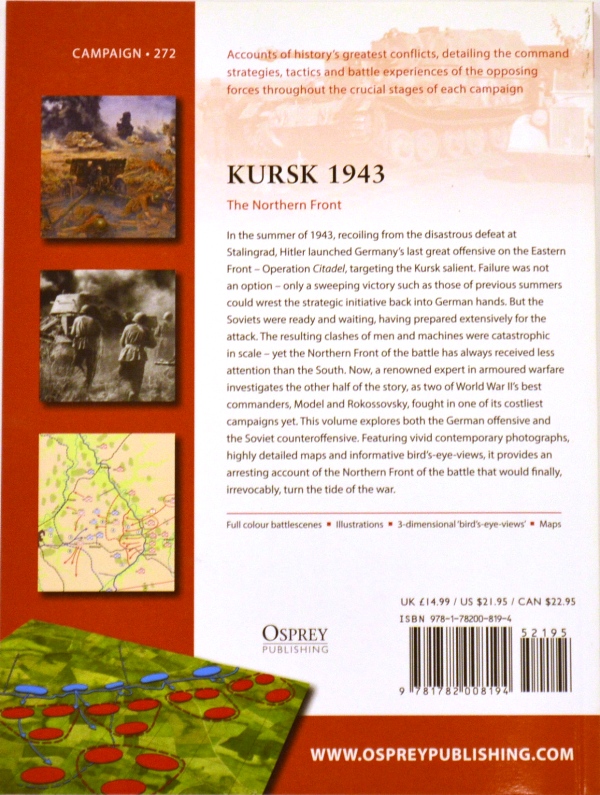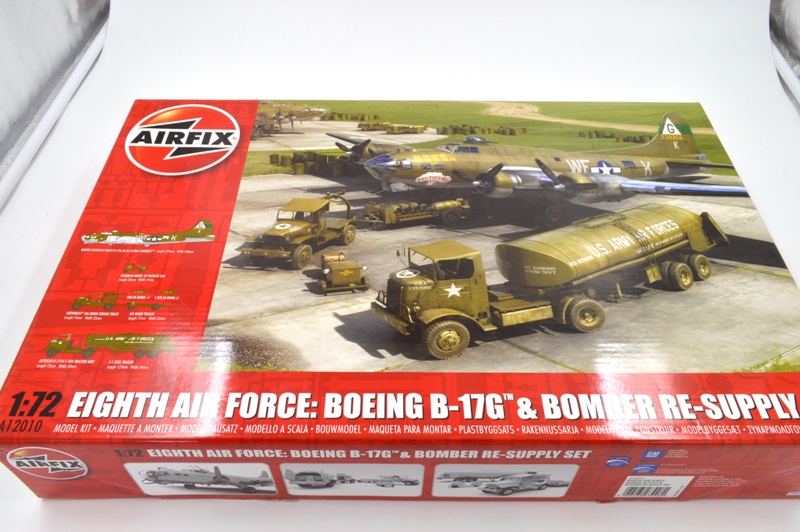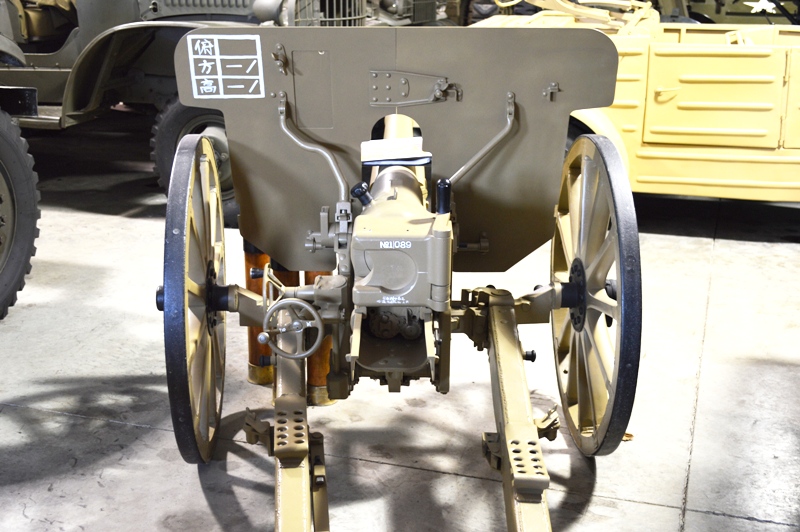
Kursk 1943: The Northern Front Campaign 272
Written by Robert Forczyk, Illustrated by Steve Noon
Paperback, 96 pages
Published by Osprey Publishing September 2014
Language: English
ISBN-10: 1782008195
ISBN-13: 978-1782008194
Dimensions: 7.2 x 0.3 x 9.8 inches
The Battle of Kursk is an enigma. By all the accepted rules of military planning it should never have occurred. The German intention was to perform a double envelopment and cut off Soviet forces occupying a protruding salient along the front roughly centered on the city of Kursk. A German victory was expected to result in the destruction of several Soviet divisions and provide the Reich with hundreds of thousands of prisoners to use in German industry. The German buildup for the attack, Operation Citadel, was protracted, and involved shifting meager reserves from other sections of the front. The plan itself was controversial with several senior officers (including Guderian) arguing to forego Citadel and shift over to the defense to build up German forces. The launch of the operation was delayed several times.
The Soviets were well aware of German intentions, and used the delays to prepare defenses in the Kursk Salient. The entire area was fortified with trenches, minefields, and strong points. Artillery was concentrated and mobile formations were pulled to the rear to act as a strategic reserve. The intention was to bleed the German Panzer formations dry, and then to launch a counter offensive named Operation Kutusov.
In this volume, book number 272 in the very successful Osprey Campaign series, Robert Forczyk covers the northern portion of the Kursk battle. These forces were lead by Model and included 90 Ferdinand and 31 Tiger tanks. Even though the common perception of the battle is one of hundreds of tanks on each side involved in epic day long battles, the reality is more along the lines of company or platoon sized formations fighting through minefields against strong points defended by anti-tank guns and dug-in armor. The Soviet defensive preparations were thorough, the German offensive preparations were lacking. Citadel ultimately failed due to logistical issues as much as any other factor. After a week the Soviets lunched their counter offensive, which lasted for the next month. While the German Army suffered roughly the same losses as the Red Army on the attack against prepared Soviet positions, the Red Army suffered approximately ten times the casualties counterattacking the Germans.
This is a good concise overview of the Northern portion of the battle, done in Osprey’s usual format. It is necessarily brief due to page limitations, but that is also its strength. A good introduction to the topic.




































































